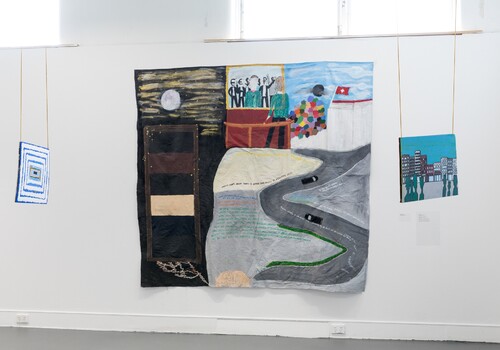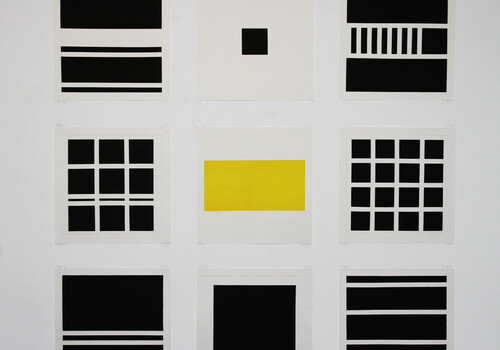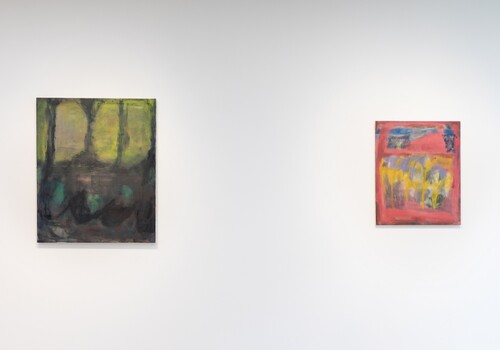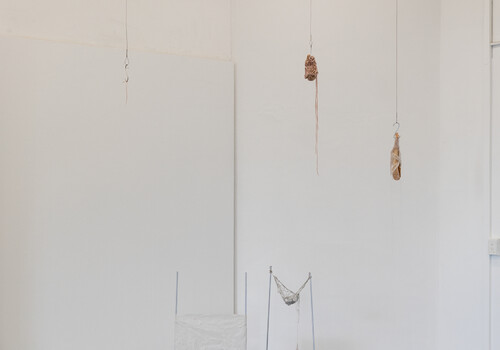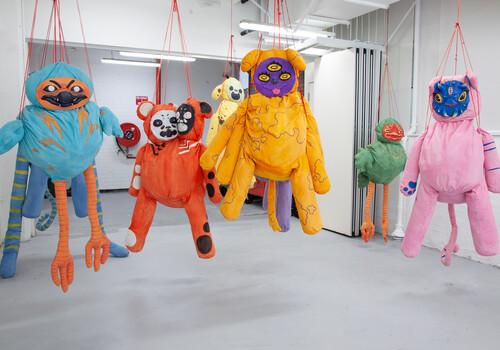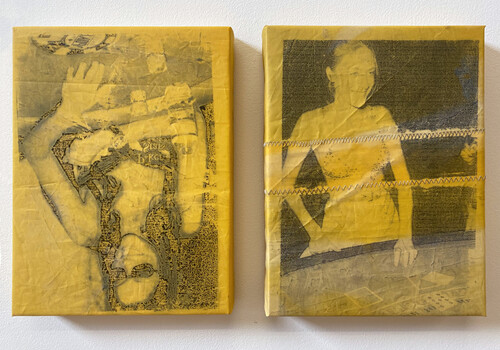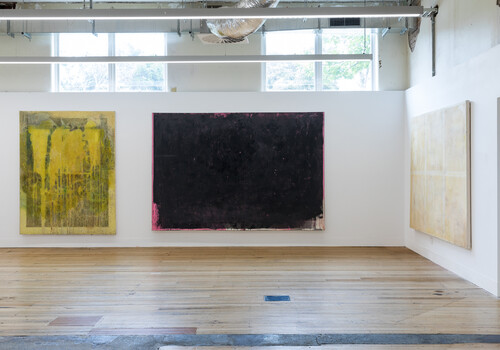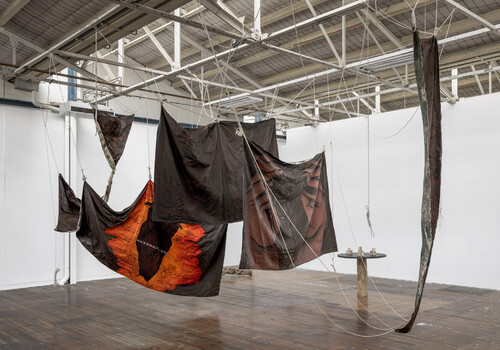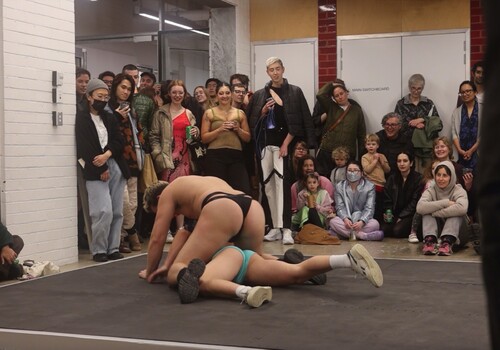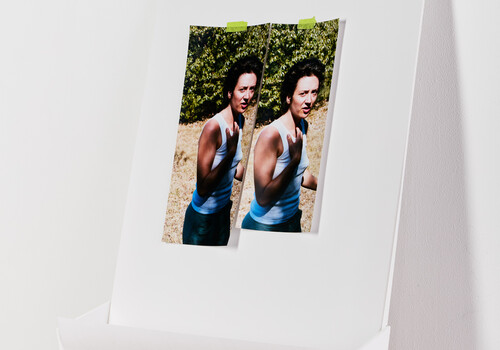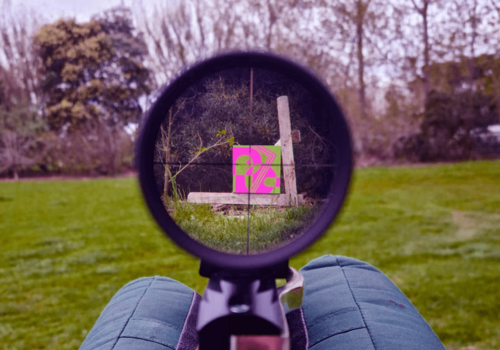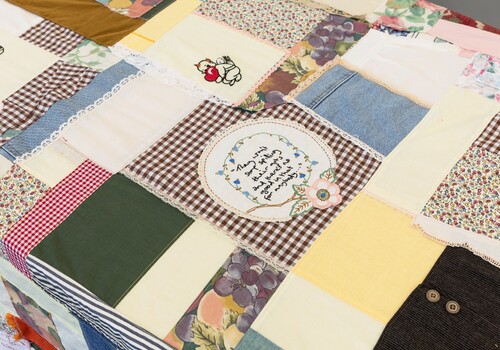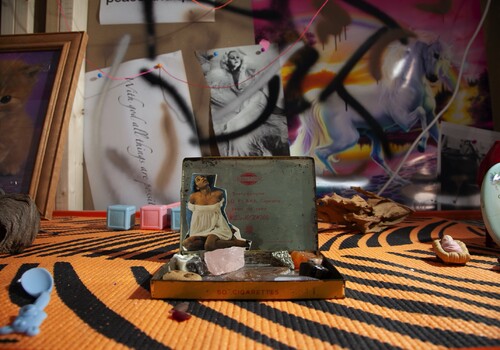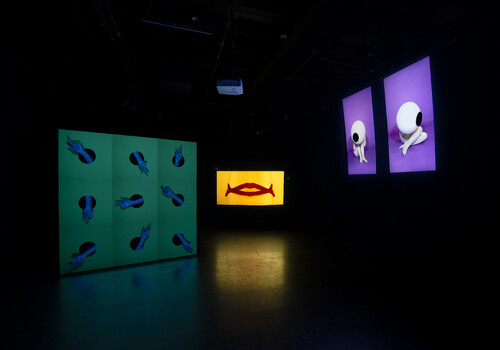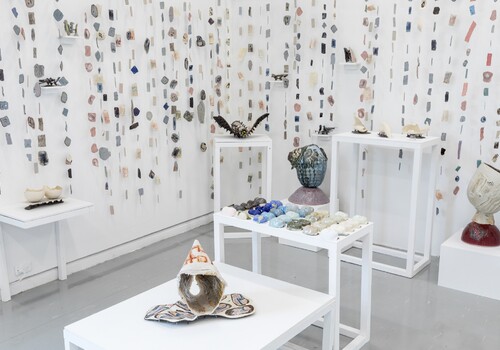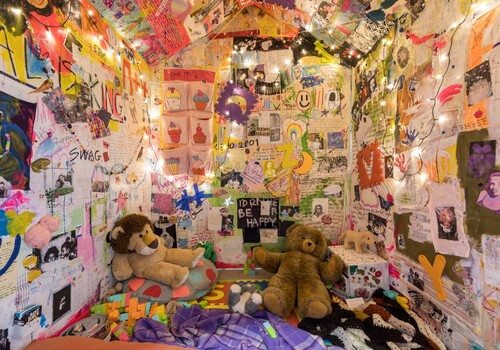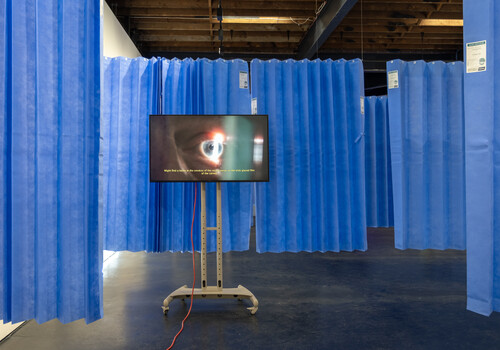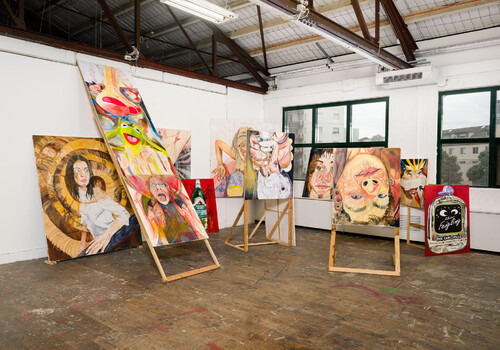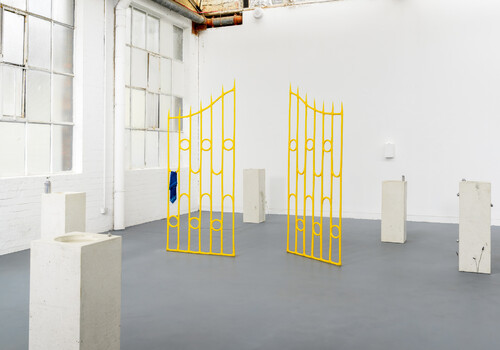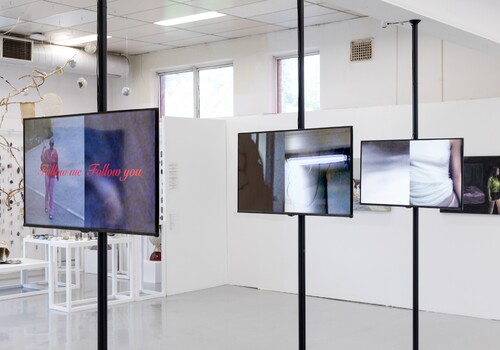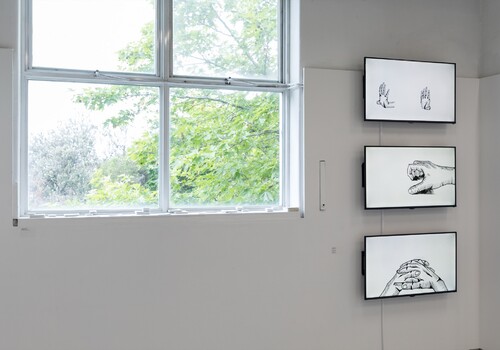Photography, Victorian College of the Arts
By Audrey Merton
How do we prepare ourselves for the market? We become the market. We are on full display, dressing up, showing off our wares. Each “new generation” of artists, art writers, curators, instigators must prove itself to the old. For the up-and-coming this seems to be the only way to succeed. Life moves faster every year.
Wasn’t I just here, squeezing past walls and corners, sneaking around with my coffee, envious of these artists’ studios? Hoping to travel, I was sucked around the corner to an enclave of Rosa Spring Voss. On display is their series of chromogenic darkroom prints, depictions of gender in the Italian countryside. Cool greens, dappled sunlight, sapphic representations of tender possession. Little pockets of time, so clearly meant to be stepped into, are taped up on the wall beckoning me to walk through them. How I yearned to be there, heating my skin in the sun, dipping low in some bracing river water, running up the hill for a supper I’ll never taste. Good photography does this to us. It casts a spell, creates a fiction that we are given the chance to enter ourselves, to place our bodies in the artist’s world. A great install can only add to this, creating a space in which the artist can promote their wares.
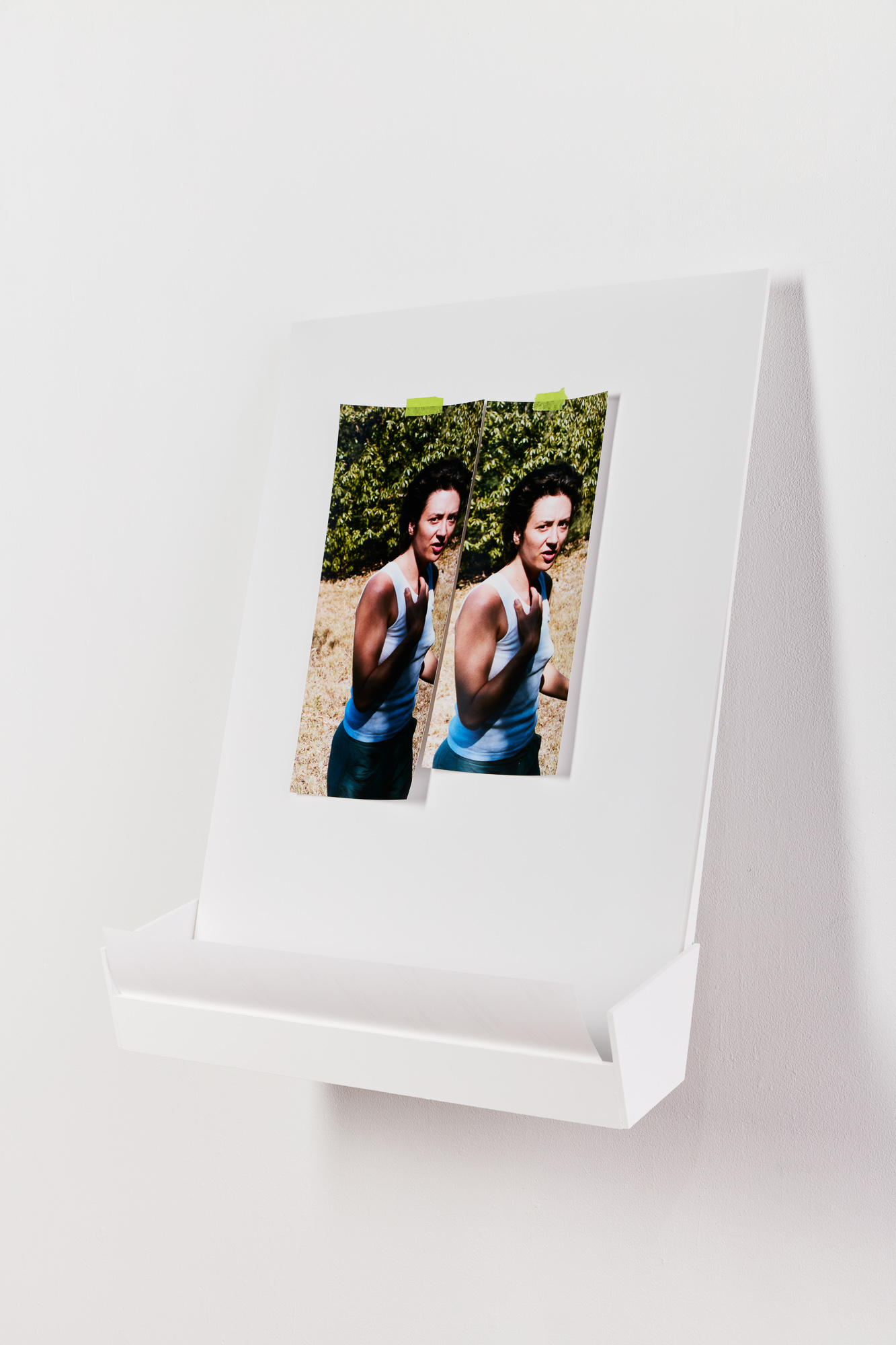
Cross the wide room, past conversations between microphones, next to large scale portraits of Melbourne’s club scene and we are met with the merging of artist-as-curator, curator as installer, designer, draughtsman. Indi Meara’s practice is a mediation of spatiality, a dialogue of balance between the vessel, the body and the archive. Her installation Untitled seems to correct the structural habits of gallery experiences; it is a curatorial take on how to market your own artwork.
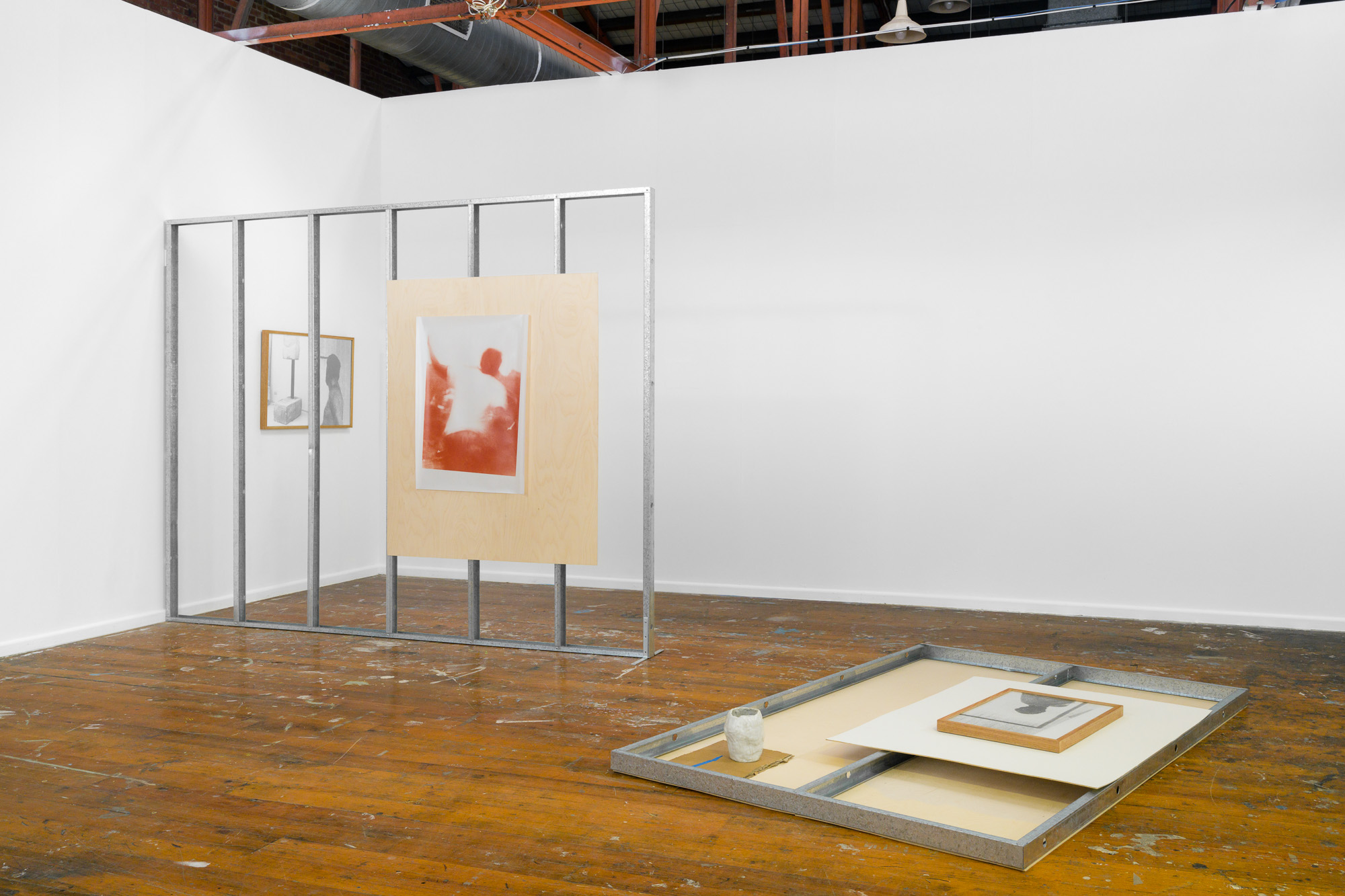
The silver gelatin and chromogenic prints are viewed through an industrial frame, disembodied moments of steel, soft red and familiar materials. What drew me in was the flat lay Meara had created. She takes the gallery wall and transposes it, disrupting the usual view of framed and hung work, yet still considering the equilibrium of a traditional hang. It’s as if I was looking down into a portal, a warp in space between gallery and floor, sculpture and print. The image is a repetition of an earlier print, taken and shifted to prove the influence space and time have on our perceptions.
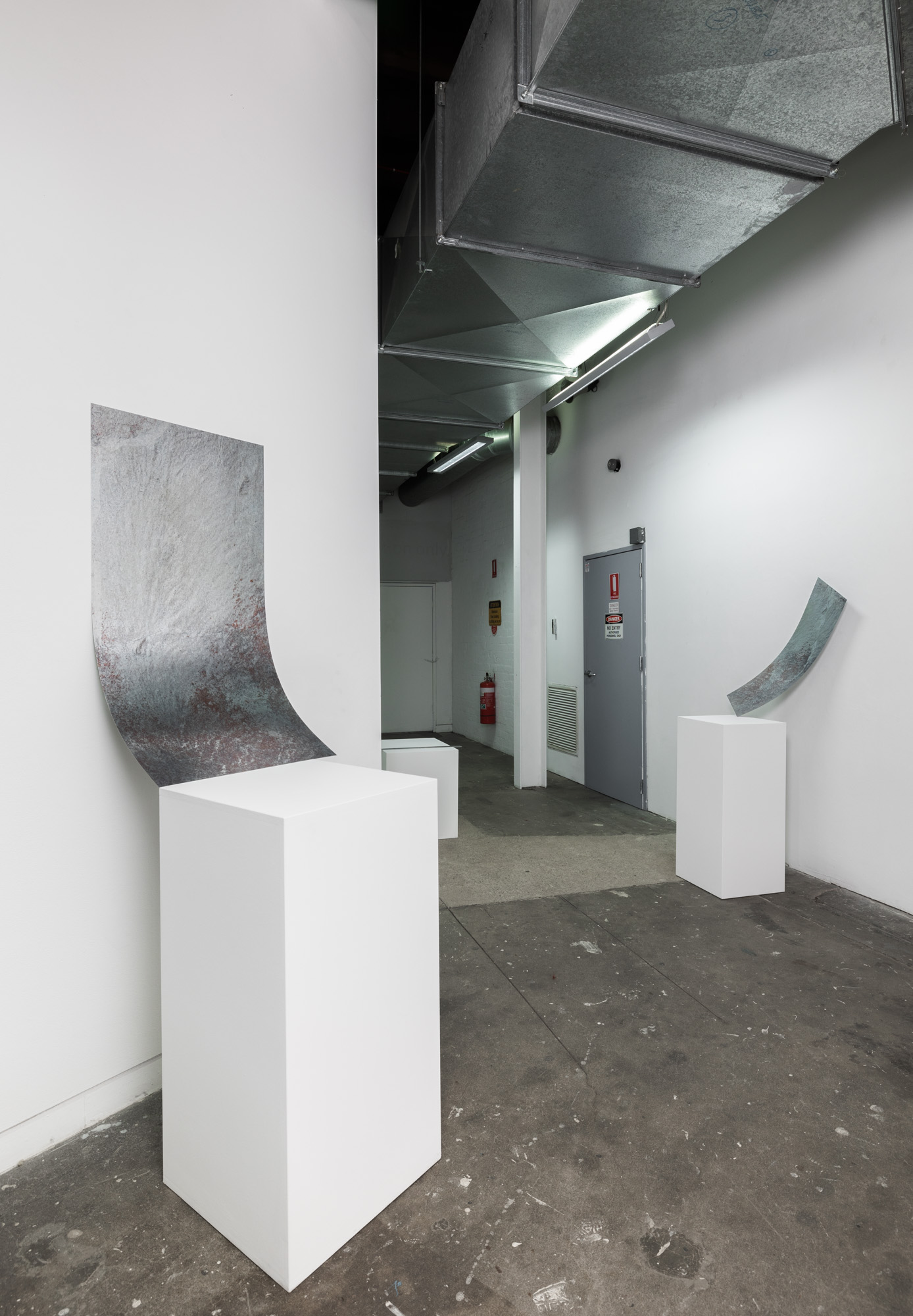
A week later I discovered Daisie Bindoff’s entrapments. Digital prints on aluminium and galvanised steel, Untitled (Hew) had me on edge. Bindoff’s sheets of metal describe the raw emotional tension that has us gritting our teeth, right before the drop. Each piece is a unique dialogue between plinth and wall, held up by its own body. They are a feat of engineering, bending space and our ability to interact with individual works. They give themselves over so the artist doesn’t have to.
Audrey Merton is an emerging curator working at RMIT Galleries. She has been an active volunteer at multiple spaces, including Bus Projects and 99% Gallery, and is currently finishing her BAHC at Monash.
